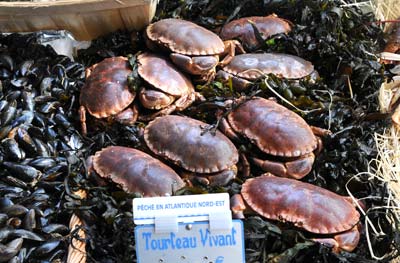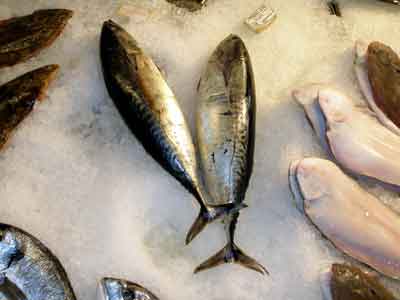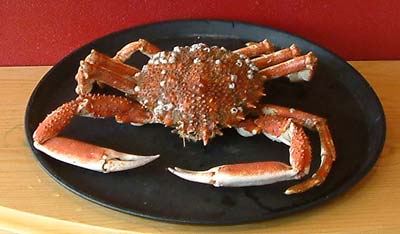
In southern europe, crabs without further definition are like to be soup crabs: shore, furry or swimming crabs. The default for crab in northern Europe is a large clawed variety known as the "edible crab" measuring as much as 20 cm (8”) across. This is a beast with well flavoured, succulent brown and white meat. I prefer a good fresh crab to lobster, though a good fresh lobster will do! The brown meat is held inside the carapace or shell, while the white meat is found, with a little effort, in the claws. It is fished in the eastern side of the Atlantic rather than the Mediterranean but is available in markets not on the Atlantic. Because it’s flavour is so good it will usually be presented plainly dressed.

Little tunny. The little tunny is a handsome fish with black scribble patterns on its back. It has a robust, torpedo-shaped body built for powerful swimming and it has no swim bladder. The mouth is large, the lower jaw slightly protruding past the upper jaw. The flesh of the little tuna is darker and stronger tasting than that of the other large tunas. It is marketed fresh, dried, canned, smoked, or frozen. It is often caught on hook and line near reefs.
Some sources show this to be the shortfin mako shark, but I think it is more likely to be the porbeagle or mackerel shark. A member of the shark family common in the Atlantic. It grows to 4 meters (13 ft) in length. It has good flavour and texture and is grilled in the form of steaks.

A Basque name for a spider crab. This is a crab with little meat but what it has is well-flavoured. It has a large, oval spiked body and long, thin spidery legs, hence its name. In the Basque country this may well be stuffed with a mixture of the crab meat, onions, leeks, garlic, tomato purée and parsley.